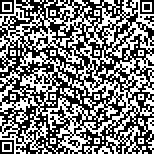| Quote
: |
王鹏,陈娅,彭江丽,彭求贤.基于UPLC-Q-TOF-MS/MS和网络药理学探讨尖尾芋抗乳腺癌药效物质及作用机制[J].湖南中医药大学学报英文版,2024,44(1):77-85.[Click to copy
] |
|
| |
|
|
| This paper
:Browser 1346times Download 674times |
| 基于UPLC-Q-TOF-MS/MS和网络药理学探讨尖尾芋抗乳腺癌药效物质及作用机制 |
| 王鹏,陈娅,彭江丽,彭求贤 |
| (湖南中医药大学药学院, 湖南 长沙 410208;湘产大宗药材品质评价湖南省重点实验室, 湖南 长沙 410208;湖南中医药大学药学院, 湖南 长沙 410208;湖南省中药活性物质筛选工程技术研究中心, 湖南 长沙 410208) |
| 摘要: |
| 目的 利用UPLC-Q-TOF-MS/MS技术和网络药理学探讨尖尾芋抗乳腺癌物质基础及作用机制。方法 结合MassBank等数据库及现有文献研究,鉴定尖尾芋醇提物的化学成分,通过TCMSP、GeneCards等数据库筛选尖尾芋抗乳腺癌的作用靶点,使用STRING数据库和Cytoscape 3.9.0构建关键靶点蛋白相互作用(protein-protein interaction, PPI)网络;通过DAVID数据库对关键靶点进行基因本体论(gene ontology, GO)功能与基因组百科全书(Kyoto encyclopedia of genes and genomes, KEGG)信号通路富集分析,最后借助Cytoscape 3.9.0构建“成分-基因-通路”互作网络图。结果 从尖尾芋醇提物中共鉴定18个成分,包括生物碱类(1,3,10,12)、苯丙素类(2,8,18)、黄酮类(6,7,9,11,15)等;基于鉴定出的化合物通过网络药理学得到429个潜在作用靶点;PPI分析发现PIK3CA、PIK3R1、MAPK1等10个核心靶点,富集分析发现核心靶点可能通过调控癌症通路发挥抗乳腺癌作用,“成分-基因-通路”互作网络图显示生物碱类成分小檗碱及黄酮类成分山柰酚、木犀草素可能是尖尾芋醇提物发挥药效的主要活性成分,其机制与凋亡相关。结论 本研究初步探究了尖尾芋醇提物抗乳腺癌活性成分为生物碱及黄酮类成分,其作用机制与细胞凋亡相关,为进一步开展尖尾芋醇提物抗乳腺癌的药效物质基础及作用机制研究提供了新的思路和线索。 |
| 关键词: 尖尾芋醇提物 抗乳腺癌 超高效液相色谱-四级杆飞行时间串联质谱 网络药理学 相互作用 富集分析 |
| DOI:10.3969/j.issn.1674-070X.2024.01.012 |
| Received:May 05, 2023 |
| 基金项目:国家自然科学基金项目(81973593);湖南省自然科学基金-科药联合项目(2022JJ80087);湖南中医药大学研究生广东一方制药有限公司科研基金项目(2021YF01);湖南中医药大学中药学一流学科基金资助项目(校行科字〔2018〕3号)资助。 |
|
| Anti-breast cancer pharmacodynamic substances and mechanism of action of Alocasia cucullata based on UPLC-Q-TOF-MS/MS and network pharmacology |
| WANG Peng,CHEN Ya,PENG Jiangli,PENG Qiuxian |
| (School of Pharmacy, Hunan University of Chinese Medicine, Changsha, Hunan 410208, China;Key Laboratory for Quality Evaluation of Bulk Herbs of Hunan Province, Changsha, Hunan 410208, China;School of Pharmacy, Hunan University of Chinese Medicine, Changsha, Hunan 410208, China;Hunan Engineering Technology Research Center for Bioactive Substance Discovery of Chinese Medicine, Changsha, Hunan 410208, China) |
| Abstract: |
| Objective To explore the material basis and mechanism of action of Alocasia cucullata against breast cancer by UPLC-Q-TOF-MS/MS technology and network pharmacology strategies. Methods Combined with MassBank and other databases as well as existing literature research, the chemical constituents of the ethanol extract of Alocasia cucullata were identified. The anti-breast cancer targets of Alocasia cucullata were screened by TCMSP, GeneCards, and other databases. And the protein-protein interaction (PPI) network of key targets was constructed using STRING database and Cytoscape 3.9.0. Then, GO and KEGG enrichment analyses of key targets were performed by DAVID database. Finally, the interaction network of "componentgene-pathway" was constructed by Cytoscape 3.9.0. Results A total of 18 components were identified from the ethanol extract of Alocasia cucullata, including alkaloids (1, 3, 10, 12), phenylpropanoids (2, 8, 18), and flavonoids (6, 7, 9, 11, 15), etc. Based on the identified compounds, 429 potential targets were obtained by network pharmacology. In addition, ten core targets such as PIK3CA, PIK3R1, and MAPK1 were found by PPI analysis. Enrichment analysis revealed that these core targets may exert anti-breast cancer effects by regulating cancer pathways. Moreover, the interaction network of "component-gene-pathway" showed that the alkaloid component berberine and the flavonoid components kaempferol and luteolin may be the main active components of the ethanol extract of Alocasia cucullata responsible for pharmacological effects, and their mechanism was related to apoptosis. Conclusion This study preliminarily explored that the anti-breast cancer active components of the ethanol extract of Alocasia cucullata were alkaloids and flavonoids, and their mechanism of action was related to apoptosis, which provides new ideas and clues for further research on the material basis and mechanism of action of the ethanol extract of Alocasia cucullata against breast cancer. |
| Key words: ethanol extract of Alocasia cucullata anti-breast cancer UPLC-Q-TOF-MS/MS network pharmacology interaction enrichment analysis |
|

二维码(扫一下试试看!) |
|
|
|
|


